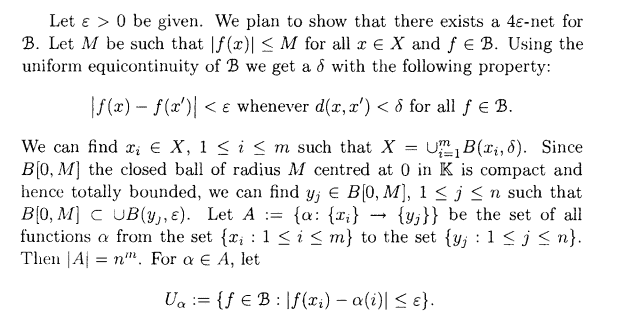这是一份GLA格拉斯哥大学MATHS4077_1作业代写的成功案例


$(\mathbf{a}) \Longrightarrow(\mathbf{b})$. Consider a sequence $\left(x_{n}\right)$ with $\sum_{n=1}^{\infty} d\left(x_{n+1}, x_{n}\right)<$ $\infty$. We need to show that $\left(x_{n}\right)$ is convergent. Since $X$ is complete, it suffices to show that $\left(x_{n}\right)$ is Cauchy. Note that $\sum_{k=m}^{\infty} d\left(x_{k}, x_{k+1}\right) \rightarrow 0$ since $\sum_{n=1}^{\infty} d\left(x_{n+1}, x_{n}\right)$ is convergent. Hence given $\varepsilon>0$, there exists $N$ such that $\sum_{n=N}^{\infty} d\left(x_{n+1}, x_{n}\right)<\varepsilon$. $^{1}$ For positive integers $n>m \geq N$, we have
$$
d\left(x_{m}, x_{n}\right) \leq \sum_{k=m}^{n-1} d\left(x_{k}, x_{k+1}\right) \sum_{k=N}^{\infty} d\left(x_{k}, x_{k+1}\right)<\varepsilon
$$
Hence $\left(x_{n}\right)$ is Cauchy.
(b) $\Longrightarrow$ (c). Let $\left(x_{n}\right)$ be Cauchy. Given $\varepsilon:=2^{-k}$, there exists $n_{k}$ such that $d\left(x_{m}, x_{n}\right)<2^{-k}$ for $m, n \geq n_{k}$. We choose $n_{k}$ ‘s with a little more care. Suppose we have chosen $n_{k}$. Then, for $\varepsilon=2^{-k-1}$, we choose $n_{k+1}>n_{k}$ such that $d\left(x_{m} x_{n}\right)<2^{-k-1}$. We claim that $\left(x_{n_{k}}\right)$ is Cauchy. For, if $k<l$,
$$
d\left(x_{n_{k}}, d_{n_{l}}\right) \leq \sum_{j=k}^{l-1} d\left(x_{n_{j}}, x_{n_{j+1}}\right) \leq \sum_{j=k}^{\infty} 2^{-j} \rightarrow 0
$$
as $j \rightarrow \infty$ as seen earlier.
(c) $\Longrightarrow$ (a). This is seen earlier.

MATHS4077_1 COURSE NOTES :
We now supply the details, in case you need them. Clearly $f_{x} \in$ $B(X)$ :
$$
\left|f_{x}(y)\right| \leq|d(x, y)-f(y, o)| \leq d(x, o) \text {, for all } y \in X \text {. }
$$
Hence $\left|f_{x}\right|_{\infty} \leq d(x, o)$. To show that the map $\varphi$ is a isometry, we need to prove that for any $x, y \in X$,
$$
d(x, y)=d(\varphi(x), \varphi(y))=\sup {z \in X}\left|f{x}(z)-f_{y}(x)\right| .
$$
We have, for any $z \in X$,
$$
\begin{aligned}
\left|f_{x}(z)-f_{y}(z)\right| &=|d(x, z)-d(z, o)-[d(y, z)-d(z, o)]| \
&=|d(x, z)-d(y, z)| \
& \leq d(x, y) .
\end{aligned}